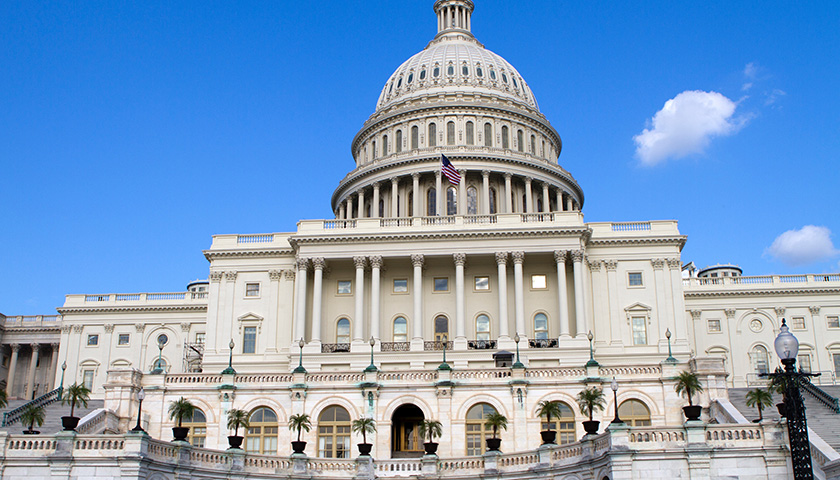by Robert Romano
Don’t look now, but Democrats’ 8-point lead in the generic Congressional ballot question from a month ago has evaporated in the latest Economist-YouGov poll of registered voters, which now shows the race for Congress tied, 44 percent to 44 percent on Sept. 24-27.
On Aug. 28-30, Democrats were leading Economist-YouGov’s generic ballot 46 percent to 38 percent. Leading the change in the state of the race is largely an apparent collapse of support for Democrats among younger adults, and a strengthening of support for Republicans among older adults.
Democrats were leading by 31 points among 30-44-year-olds on Aug. 28-30, 55 percent to 24 percent. That lead has shrunk to 12 points on Sept. 24-27 among 30-44-year-olds, 46 percent to 34 percent, in about a month.
Republicans also strengthened their lead among 45-64-year-olds, from 43 percent to 42 percent last month, to 49 percent to 42 percent this month. And their lead among seniors increased from 55 percent to 38 percent to 56 percent to 37 percent.
That’s all among registered voters. Recently, Economist-YouGov also added likely voters to the mix, and there, Republicans have opened up a 1-point lead, 47 percent to 46 percent.
Throughout the cycle, Republicans have been more energized than Democrats. A month ago, 77 percent of Trump supporters and 66 percent of Republicans said they were definitely voting, compared to 74 percent of Biden supporters and 64 percent of Democrats.
Now, 77 percent of Trump supporters and 66 percent of Democrats still say they are definitely voting, but only 71 percent of Biden supporters and 54 percent of Democrats say the same. Democratic enthusiasm has collapsed by 10 points in just a month. That’s pretty remarkable.
An undercurrent Democrats have been banking on is increased Democratic enthusiasm following the Supreme Court’s decision to overturn Roe v. Wade opening the door for states to further restrict abortions. In the July 2-July 5 Economist-YouGov poll, 34 percent said they approved of the Supreme Court’s decision and 54 percent disapproved, including 53 percent of independents who disapproved overall.
But by Aug. 28-30, disapproval of the decision had collapsed to 49 percent, with just 44 percent of independents disapproving of the decision, a 9-point collapse among independents. That’s significant.
Since then, Economist-YouGov has not reported public opinion on the Supreme Court decision, but considering how the Congressional generic ballot has moved, the answer must not be good for Democrats who were hoping it might save their skins in a year that otherwise favors the GOP.
So, these could be historical trends reasserting themselves that favor Republicans, the opposition party, in the Congressional midterm election cycle. In midterm elections dating back to 1906 through 2018, the party that occupied the White House lost seats in the House 27 out of 30 times, or 90 percent of the time, with losses averaging 31 seats. The exceptions were 1934, 1998 and 2002, when the incumbent party was able to pick up seats in the House.
In the Senate, comparatively, the incumbent party lost seats 21 out of 30 times, or 70 percent of the time, with losses averaging three seats in the Senate.
Now, polls are once again reflecting that likelihood as the month of September draws to a close. This is what usually happens in the midterm cycle. In a tug of war between fatigue versus anxiety, the opposition party that lost the White House in the prior election is anxious to reclaim power, and so are more enthusiastic than the incumbent party who just won the White House. So far, that appears to be holding up, but we’ll find out in a little more than a month. Stay tuned.
– –
Robert Romano is the Vice President of Public Policy at Americans for Limited Government Foundation.
Photo “United States Capitol” by Ramaz Bluashvili.




